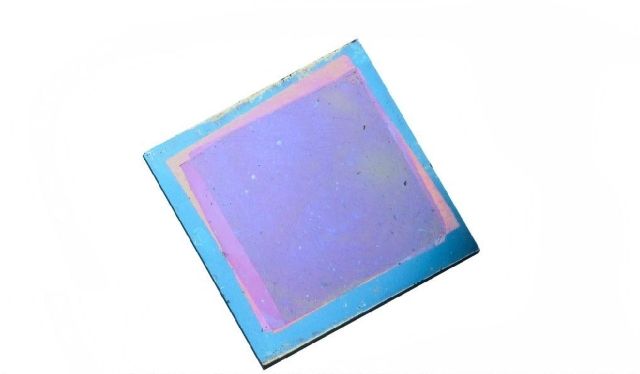Assorted European Tech News
New Record for Radio Transmission Speeds
Did you know that a conventional DVD can be transfered to the fastest computer in only 10 seconds? Well, this record has just been beaten by a team of researchers from the University of Stuttgart and the Fraunhofer Institute, who have managed to get a 6 Gbit/second data rate over a distance of 37 Km. The huge transmission speed was reached due to the use of efficient transmitters and receivers, at a radio frecquency of 71…76 GHz in the E band, which is regulated for satellite and terrestrial usage.
Easy Wi-Fi Solutions for European Refugees
A Croatian startup has been awarded the best startup project in the Best Humanitarian Tech of the Year category at The Europas. A number of 12 teams competed for the same award. Meshpoint, the winning company, helped the refugees coming to Croatia, and became aware of the need of free, fast access to the internet for the refugees.

The company has created an efficient Wi-Fi system, which consists of a router, batteries and a 3D printed case that protects the equipment, making it available even in the most harsh weather conditions.
The device can provide internet access for up to 200 people simultaneously. The system is very easy to use, helping even the inexperienced users connect to the Internet and have access to critical information.
US Internet Connections Now Faster than Europe’s
It’s a fact: lots of people want (and often times, need!) fast Internet connections. A new report from Twin Prime claims that the US Internet connections are faster than Europe’s, at least when it comes to LTE and local Wi-Fi networks.
Twin Prime has tested the Wi-Fi speeds in several cities around the globe - Sydney, Milan, Paris and Buenos Aires, for example. Surprisingly, data over LTE connections was downloaded up to 100% faster in comparison with Wi-Fi connections. The explanation may be simple, though, as recent reports from DA show that most European GSM operators still use HSPA, so the balance may change again when Europe upgrades its connections to LTE.
Wi-Fi Available in More London Tube Stops.
Virgin Media has recently announced that 250 new tube stations in London will provide free Wi-Fi Internet connections for travelers. This means that almost all the tube stations in London are now providing free, high speed Internet connections. A number of 20 more stations will get access to the service within the following few months.
European Tech News and Innovations
Wi-Fi Data to Get a 10X Speed Increase
Graphene, a carbon-based material which is made out of very thin sheets, is transparent and opaque to radiation. These qualities have encouraged some manufacturers to try and create microchips out of it. If their tests will be successful, we may soon have all sorts of Internet-connected devices that will be able to transmit wireless data up to ten times faster.
The EPFL and UNIGE scientists have already created a microchip prototype, knowing that graphene is able to protect the data it is working with from unwanted radiation. In fact, graphene acts almost like polarized glasses; the microchip will only allow radiation that vibrates in a particular way get through its layers.

In other words, graphene can be both transparent and opaque to radiation, depending on the direction and orientation of the vibrations. These microchips may be able to work at frequencies that exceed 1 Terahertz.
When phones will have access to this technology, for example, we will be able to send and receive data up to 10 times faster, and this will translate to better image and better sound, to name just a few advantages.
Are Wi-Fi Allergies Just a myth? Some People in Europe Still Get Sick
The medical condition known as Electromagnetic Hypersensitivity (EHS) is internationally disputed, as doctors and other specialists take sides. Some of them declare that such a disease has never been a real medical condition, whereas others make it responsible for the degrading health of many people.
Those that believe that EHS exists describe it as a body weakness that is triggered whenever they come close to Wi-Fi routers and cell phone towers. The argument between the two parties has already lasted for more than a decade, and numerous studies have been made to settle the matter for good.

The studies have been conducted by large groups of specialists, ranging from neuroscientists to psychologists and oncologists. Still, the results of theses studies vary a lot, so they can’t be used to demonstrate anything for now.
Some specialists even believe that EHS is in fact triggered by the nocebo effect, when people start believing that something bad will happen to them. The medical community has recently started to consider this explanation as a very plausible one.
Nevertheless, there are several countries that recognize EHS as a medical condition that can impact many citizens. In fact, some stats in Europe state that about 5% of the population is suffering from EHS. The highest percentage can be found in Germany; close to 10% of the Germans declare that they are negatively impacted by the presence of the Wi-Fi waves.
These days, Wi-Fi waves are present in any city or commercial district, in cafes, restaurants, bars, buses and universities. It’s almost impossible to avoid them! For some people, this is a positive aspect, because it allows them to connect to the Internet freely. Still, others think that Wi-Fi signal is a real menace for their health. Some people who declare that they suffer from EHS have even left the modern societies, living in remote areas, where Wi-Fi connections aren’t available.
